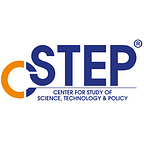State Action Plan 2.0: Time to Get Vocal for Local
By Roshna N and Dr Indu K Murthy.
Nineteen extreme weather events in 2019 claimed 1,357 lives, with heavy rain and floods accounting for 63% of deaths in India.
Between 2013 and 2019, there has been a 69% increase in the number of heatwave days. Many Indian states are increasingly experiencing extreme weather events such as heavy rainfall, heat waves, and super cyclones. These are projected to increase even further in the future. These changes in India’s climate will be an additional stress to ecosystems, agricultural outputs, and freshwater resources, and could also damage the infrastructure.
Depending on topography and climatic zones, the impacts of climate change differ widely across the states and even within states.Consequently, the action plans of states to deal with climate change should be aligned to these regional concerns, while looking at the big picture.
In short, state action plans on climate change (SAPCCs) are the platforms for states to get the key levers moving from policy to action.
State action plans
The first set of SAPCCs was drafted by various states during 2012–2015. The primary objective was to assess unique climate change vulnerabilities pertaining to each state and propose action plans to mitigate and manage future climate change, while attaining Sustainable Development Goals (SDGs). The states were able to examine broad vulnerabilities and list out activities for climate change action. However, their implementation was constrained by factors, such as inadequate science-based evidence, community involvement, budget, and political will.
What went wrong?
The SAPCCs were intended to be a remarkable step towards the development of sub-regional climate action plans. The framework by the Ministry of Environment, Forest and Climate Change (MoEFCC) insisted that the plans be based on an assessment of the vulnerability and impact of climate change in the state. However, states had limited access to vulnerability assessment at a sub-regional scale. Moreover, mitigation and adaptation plans were listed as ‘wish-lists’ by the states, and were not tied to a budget as part of an implementation plan.
MoEFCC had envisaged community-based participation in the formulation process. However, most of the plans were drawn up without taking into consideration the experiences of communities living in climate-sensitive regions. Madhya Pradesh was among the few states that tried to map regional issues with people‘s participation. Thus, falling short of its original goals and intentions, the SAPCCs became documents with vague plans but no clear targets.
Pointers for SAPCC V.2.0
Currently, the focus is back on SAPCCs, with states revising them to align state-level initiatives with the Nationally Determined Contributions (NDC) targets. For comprehensive policy documents to come out of this exercise, it will be essential to engage various state line departments, district, and city administrations.
Moreover, plans that have a buy-in at the local level are more likely to succeed in finding long-lasting solutions to regional climate issues. For instance, in Gujarat, Natural Resources Defence Council (NRDC) helped improve the lives of salt farmers by replacing expensive diesel-powered water pumps with solar-powered ones. Similarly, Maharashtra’s Energy and Labour Department approved tenders for 500 MW of dedicated solar-based agriculture feeders. Trust-building practices such as these can go a long way in buying people participation.
Additionally, a close examination of district-level climate change projections, focus on climate-sensitive regions, and specific budgets are essential to imbue the plan with a certain robustness.
Significantly, the states should also incorporate global thinking by stressing on policies that not only deal with the existing climate challenges but also prepare for future climate risks. Thus, a ground-level action plan that addresses regional challenges, while following global practices, is the way to go.
The authors, Dr Indu K Murthy and Roshna N are Principal Research Scientist and Senior Research Engineer at CSTEP. They may be contacted on Twitter (@indukmurthy) or on LinkedIN.
